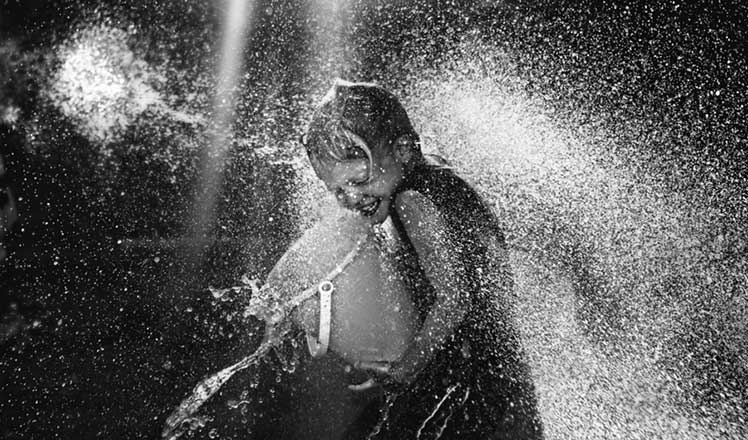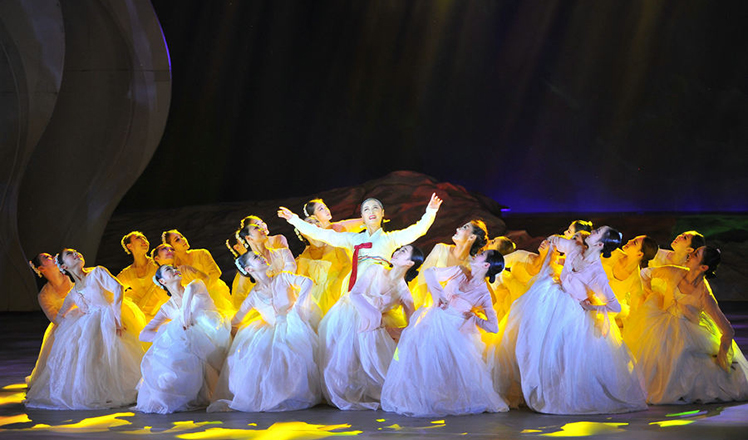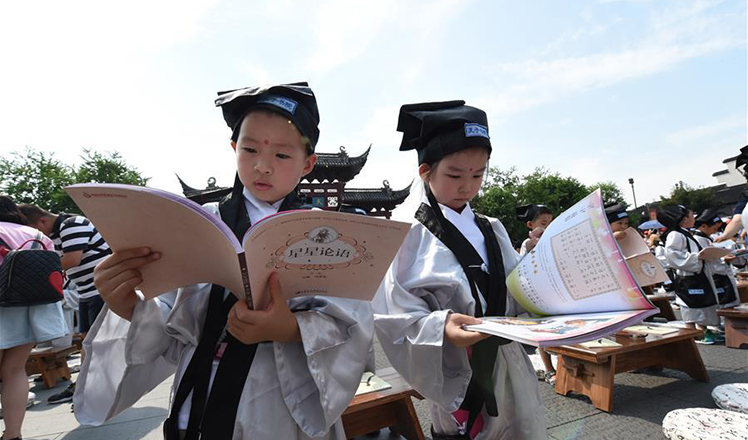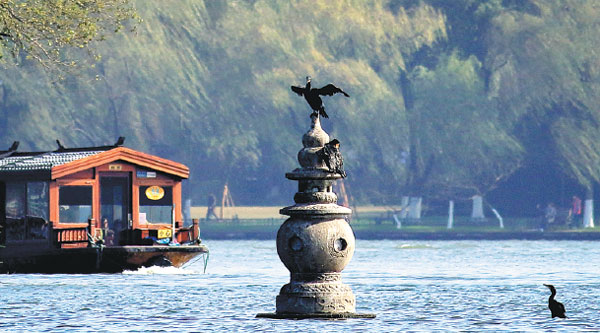The three pagodas - a scene from dreams
Updated: 2016-09-02 09:18
By Raymond Zhou(China Daily USA)
|
|||||||||
A small site on West Lake makes a big splash, as Raymond Zhou finds out.
Of all the man-made structures in and around Hangzhou's West Lake, the three pagodas that loom over the water are among the smallest I have seen.
Yet they are so conspicuous, thanks to their location.
Rising just 2 meters above the surface of the water, they are like a trio of diminutive doyennes frozen in time doing a Zen version of the Matisse dance.
They form an equilateral triangle, located 62 meters from each other.
One need not read too much into the numeral 62 because the ancient Chinese did not use the metric system.
But 33 is a nifty number that interpreters with a bent for clairvoyance have come up with - standing for the total of moons that can be seen, from a panoramic angle I suppose - at this particular site.
Each pagoda has five round holes, and when lit from within, it would appear that there are a total of 15 moons visible from afar. Then, as the moons are mirrored in the lake, the sum adds up to 30.
Of course, one should not forget the real moon and its reflection. As for the 33rd moon, it can only be seen by those with a fertile imagination, as it exists only in the mind.
This view of beauty and tranquility has a poetically confusing name: Three Pools Mirroring the Moon.
Where are the three pools? you may well ask. Some may point you to the nearby islet with its four square-shaped embankments, but that would add up to four ponds.
The real answer lies in the three pagodas, which imperceptibly divide the water into three parts.
Again, ignore your scientific mind. Call up your inner poet.
As each pagoda lights up a limited area around it, the vastness of the unlit water is simply discounted, rendering it into three pools.
Well, this is just one justification, but it is as good as another.
If you don't believe me, just whip out your wallet and look at the back of a 1-yuan note.
It features a daylight scene of the three familiar pagodas. But given the angle of the picture, the distant pagoda could not possibly be there. Call it artistic license, which, if you think of it, is not that different from a perspective-free scroll painting.
The pagodas were built by Song Dynasty (960-1279) poet and governor Su Shi, who was also responsible for the Su Causeway on the lake.
He meant them to be watermarks to gauge the necessity of dredging of the lake. They were rebuilt in the Ming Dynasty (1368-1644), and the nearby islet was constructed from silt and mud in 1607, with improvements and architectural additions later.
Meanwhile, the origin of the structures being known has not prevented people from coming up with their own versions, many of which involve a snake-headed demon.
Unlike the famous White Snake spirit, this fish demon is a villain who snatches local girls or thrashes the city with storms.
Local people - or a Buddhist saint, depending on which version of the folk tale you believe - are said to have carved an incense burner out of a giant rock and finally subdued the fish demon by placing the burner upside down on its body. According to this myth, what project out of the water today are the legs of the stone burner.
Also, if you believe in this tale, you will probably take July 29, 2013, as the night when the fish demon made a desperate attempt to break free.
On that night, one of the pagodas fell into the lake after it was hit by a boat.
Perhaps to forestall the prospect of the story of the missing pagoda from hitting cyberspace, agencies in charge of the lake and its cultural relics took immediate action. They called in frogmen to lift the pieces of the pagoda from the bottom of the lake. Fortunately, they were not damaged and the pagoda was restored before daybreak.
It was also then that many people learned that the pagodas are not single-piece structures, but rather are mortise-and-tenon structures.
No glue or cement was used to build them, say the authorities.
The structures came under the protection of the municipal government in 1992, and were elevated to provincial-level protection in 2005.
In 2013, as part of the Top 10 scenes of West Lake, the pagodas became a State-level relic.
Enchanting as the night scene is, the structures have an ethereal quality in the daytime, too. If you look closely, the pagodas and their perfect reflections are divided by a short and thin line of shimmering water, making them look like spinning tops.
And, if you remember the last scene from Christopher Nolan's film Inception, you'll know that the scene implies a dreamlike state.
Gliding on the storied lake, one is assured that traversing dreams and reality does not require 1,000 years of spiritual pursuits a la Madame White Snake.
Contact the writer at raymondzhou@chinadaily.com.cn
|
The three pagodas draw not only a constant flow of tourists but also flocks of birds on West Lake. Xu Ruikang / For China Daily |
|
West Lake is the centerpiece of Hangzhou's tourism appeal. Wang Jianhua / Xinhua |
|
The landscape of the pagodas is featured on the 1-yuan note. Provided To China Daily |
(China Daily USA 09/02/2016 page12)
- Rousseff appeals impeachment to Supreme Court
- Europeans displeased with their education systems
- Singapore Zika cases top 150; China steps up arrivals checks
- Artists respond to 9/11 attacks in new exhibit
- Rocket explodes on launch pad in blow to Elon Musk's SpaceX
- Record number of Americans dislike Hillary Clinton: poll

 Commemorative G20 stamps a hit at media center
Commemorative G20 stamps a hit at media center
 Ten photos from around China: Aug 26- Sept 1
Ten photos from around China: Aug 26- Sept 1
 Hangzhou: Paradise for connoisseurs of tea
Hangzhou: Paradise for connoisseurs of tea
 Top 10 trends in China's internet development
Top 10 trends in China's internet development
 Childhood captured in raw, emotive black and white
Childhood captured in raw, emotive black and white
 Korean ethnic dance drama shines in Beijing
Korean ethnic dance drama shines in Beijing
 Children explore science and technology at museum
Children explore science and technology at museum
 Children wearing Hanfu attend writing ceremony
Children wearing Hanfu attend writing ceremony
Most Viewed
Editor's Picks

|

|

|

|

|

|
Today's Top News
Trump outlines anti-terror plan, proposing extreme vetting for immigrants
Phelps puts spotlight on cupping
US launches airstrikes against IS targets in Libya's Sirte
Ministry slams US-Korean THAAD deployment
Two police officers shot at protest in Dallas
Abe's blame game reveals his policies failing to get results
Ending wildlife trafficking must be policy priority in Asia
Effects of supply-side reform take time to be seen
US Weekly

|

|












